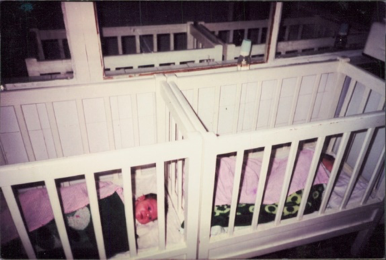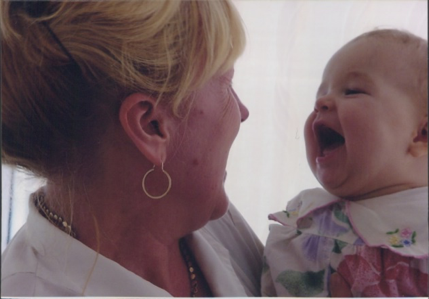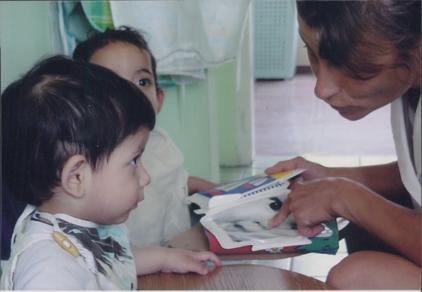Our largest expense for Helping Hands is the salaries of the women who care for the children in the orphanages. In 2017, we paid $7,000 for the salaries of our five babas (Bulgarian for grandmother). Three of them work at the Vidin orphanage, caring for children ranging in ages from infants to 3 years of age. The other two work at the daycare program for disabled children. Why do we spend so much money on this program? Because when children only have their physical needs met and don’t have at least one consistent care-taker, they can develop “reactive attachment disorder.” This leaves them unable to readily connect with other human beings for the rest of their life.

When I lived in Bulgaria and took the above picture, I saw many little ones that screamed every time a human approached their crib. The babies that had just been brought to the orphanage still had some memory of positive, loving contact and when they were picked up would grab hold of your shirt with such a strong little grip, it was hard to return them to their bed.
More than a few studies and observations of orphans and foster children have found a correlation between consistent loving care and normal emotional, mental and physical development. There have also been many sad stories of children deprived of this essential care and failure to thrive. Sometimes emotional neglect can be so severe, the child dies.
Orphanages were a common institution during the 19th and early 20th century. Children reared in them had a fifty-fifty chance of surviving to their teen years. U.S. orphanages at the turn of the last century had infant death rates between 32 and 75 percent. Those in Baltimore were at 90 percent (Field, T., 2014).
Orphanages that provide the children with formula and healthy food, proper clothing, sufficient staff, adequate medical care, good hygiene, and a clean environment aren’t the answer. Those places that provided all this but did not include
In the Reader’s Digest story “Lost Children of Bacau,” (Peberdy, B., 1997), the horrible situation of the disabled children at an orphanage in Romania was uncovered. The children had only enough to keep them alive and were malnourished and developmentally delayed. The author was a bank worker from Britain in Romania as a volunteer. The situation was repeated in many of the former communist countries.
The video-taped interviews with some of our own babas are replete with stories of children coming to the orphanage a year or two behind their expected development. Often within a month of being assigned a baba, the children make tremendous strides such as starting to talk, walk, and smile. The cared-for children often experience an improvement in their health as well, particularly infection-fighting ability.

This all makes sense. The stress of neglect increases cortisol, epinephrine and other stress hormone levels. This causes the body to make “fight or flight” a priority and reallocates resources to continuing the stress response. The immune system isn’t a priority so the stress hormones makes them less active. This explains why infections are very common with prolonged stress, such as occurs in many orphanages. It also gives us insight into the improvement in growth after a child is adopted. Even if that child wasn’t at an age when growth is expected, the decrease in stress often supports growth. Adopted children often grow a lot that first year they are with their adopted family.

We’ve heard from some of the people that have adopted children from the Vidin orphanage. They have noted how a child they adopted made great strides after they were assigned to a Baba. Reports of the babas bonding to their assigned charges confirms that all our fund raising and procuring of materials is worthwhile. It is giving a child their life back.
References
Field, Tiffany (2014). Touch. Cambridge, MA: Massachusetts Institute of Technology Press.
Peberdy, B. (1997). Lost Children of Bacau. Reader’s Digest, September, 1997.